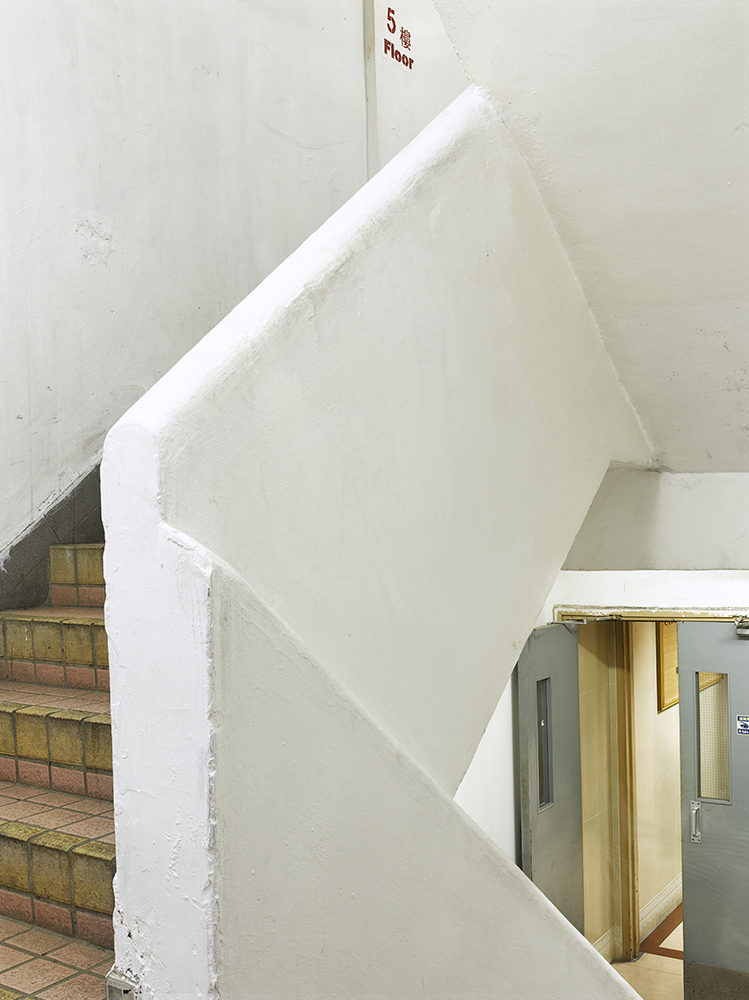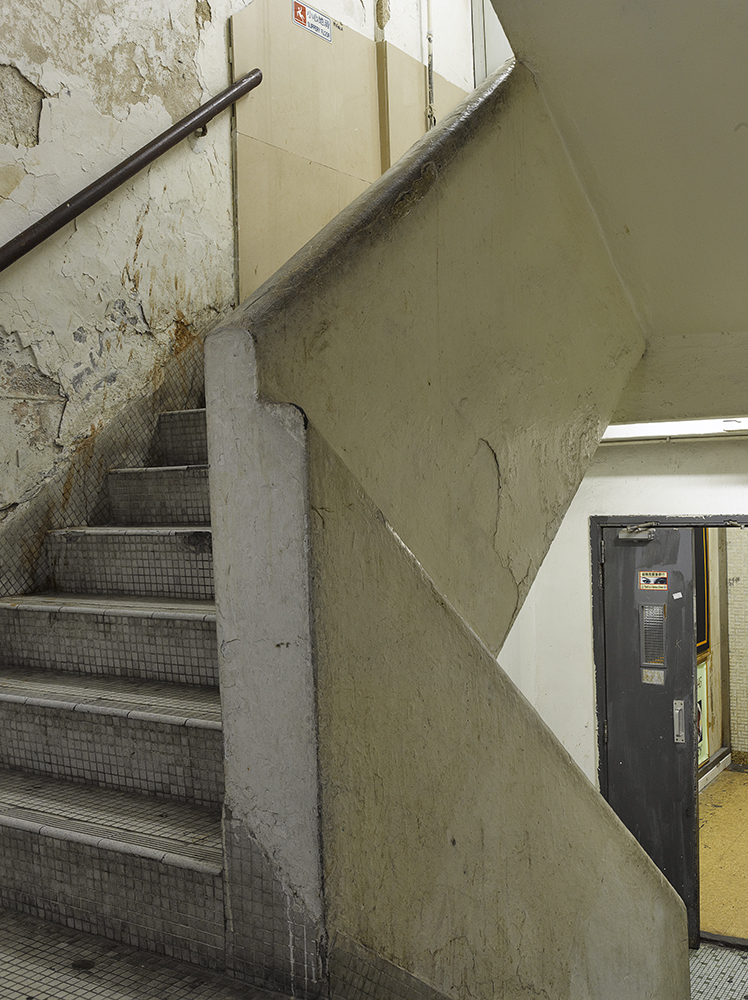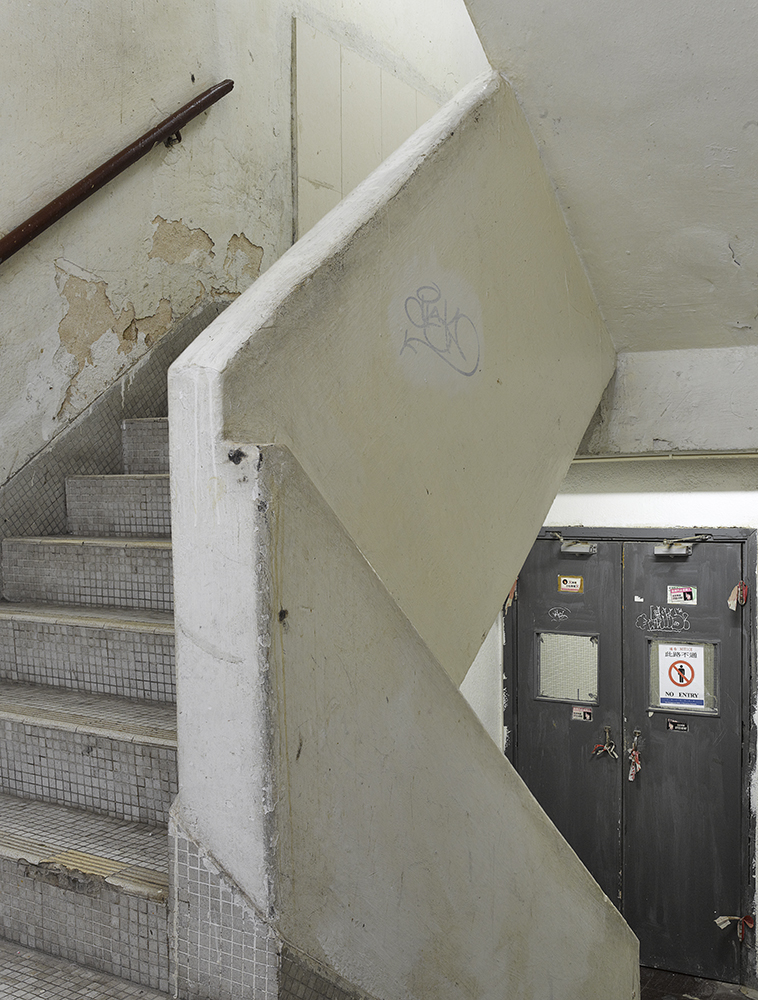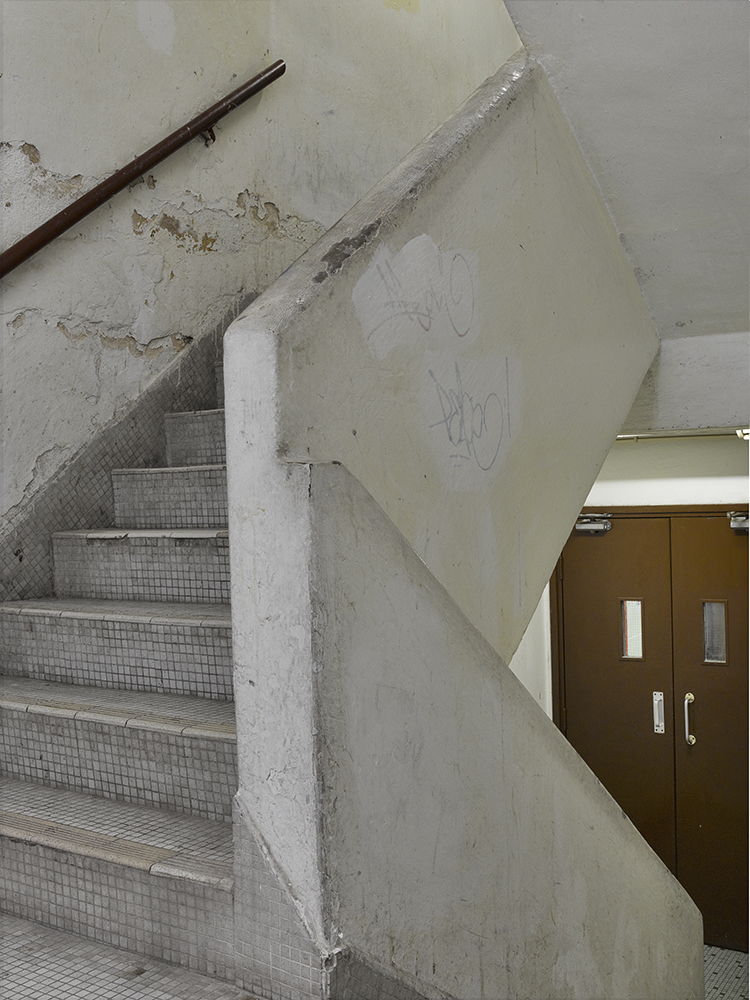Pictured here are the staircases of Chung King Mansions in Hong Kong taken from the same location and angle. Most buildings are centrally managed via a body corporate. The Mansions, however, is an example of a building with extremely complicated ownership structures making central organisation difficult. As a result the level of maintenance varies dramatically creating a space that evolves organically.
This provides some insight into the owners or their control over each floor and it would be easy to pass judgement over their status or organisation.
Adding to the bias, the building is portrayed in movies as a place of vice and crime. Locals consider it a place where you can have good curries, if you dare.
Rather than being a « den of crime », however, the building is a major African-Chinese trading hub. A large proportion of Sub-Saharan trade passes through the building via African entrepreneurs and Pakistani whole-sellers who use the Hostels and Restaurants as trading hub and accomodation. In reality the owners of the floors are flourishing business people who positively contribute to the overall trade in Hong Kong.
Taking these facts into account this series aims to raise questions over our own biases.
amateur category
Judging a Building by its Staircase (Series)
DESCRIPTION
AUTHOR
Wolf Nitschke is a French-German photographer based in Paris whose fine art documentary work traverses dramatic landscapes, the human impact on nature, and the social impact of urbanism.
With a highly considered approach to his art practice, Wolf's work is recognisable for its clarity and distinct depth of emotion, documenting the complex relationship between humans and nature, urbanism and social fabrics, and architectural design practices.
Wolf's practice investigates the unique and complex bonds humans develop with natural environments. His work explores our impact on the world, and the world’s impact on us, by revering the sublime elements of nature and examining the human context therein. With concern for the fragility and sustainability of our planet, Wolf's work focuses on locations that hold significance within the global predicament of climate change, urbanism, equality, and social justice.
With a highly considered approach to his art practice, Wolf's work is recognisable for its clarity and distinct depth of emotion, documenting the complex relationship between humans and nature, urbanism and social fabrics, and architectural design practices.
Wolf's practice investigates the unique and complex bonds humans develop with natural environments. His work explores our impact on the world, and the world’s impact on us, by revering the sublime elements of nature and examining the human context therein. With concern for the fragility and sustainability of our planet, Wolf's work focuses on locations that hold significance within the global predicament of climate change, urbanism, equality, and social justice.
back to gallery







